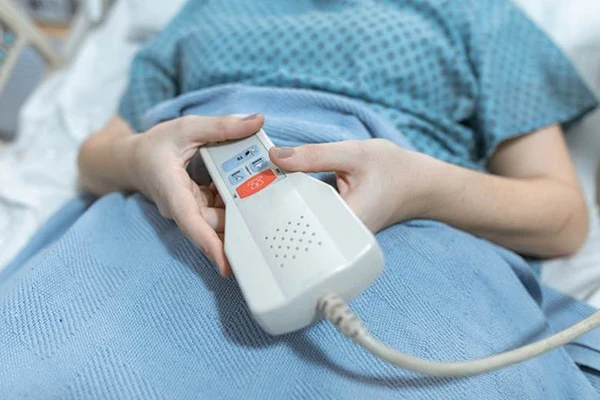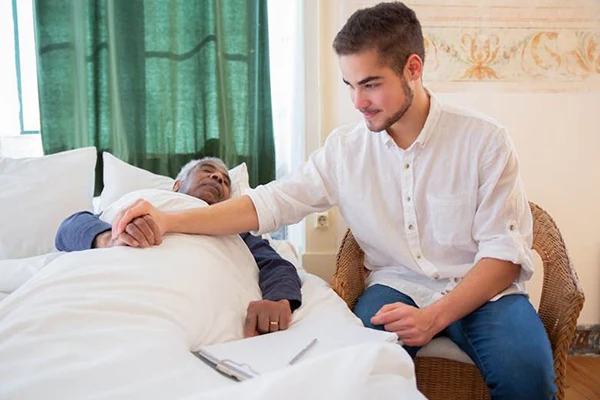We live in a world that is constantly buzzing with app notifications, updates, and downloads. Every week, there’s a new tool promising to make our lives safer, more connected, or more organized. But when it comes to real safety—the kind you need in an emergency—it’s not always your phone that comes to the rescue. Sometimes, the most reliable solutions are simple, physical devices you can trust to work when it matters most.
One perfect example is an emergency button for seniors. This isn’t about scrolling through menus or unlocking a phone in a crisis. It’s about pressing a single button that instantly connects you to trained help, no matter the time or place. And the best part? These devices are designed to work when everything else fails—whether your phone battery dies or your Wi-Fi cuts out.

When emergencies happen, speed and clarity matter. Complex tools with multiple steps or features you need to “find” in the moment can slow you down. A straightforward device, built for a single purpose, removes the guesswork.
Think about it. You wouldn’t want to navigate a dozen menus during a fall, a sudden illness, or a household accident. With a dedicated emergency device, there’s no hesitation. One action. One result. Help on the way.
Modern emergency call buttons are not the clunky, old-fashioned gadgets you might picture. Today’s models are small, lightweight, and designed for everyday wear. Many can be worn as pendants or wristbands, blending into your daily routine without feeling intrusive.
Here’s what makes them stand out:
● Instant connection to a 24/7 monitoring center that can send help to your location.
● Fall detection technology that triggers an alert even if you can’t press the button yourself.
● GPS tracking so responders know exactly where to go.
It’s all about combining dependable tech with thoughtful design. These devices work indoors, outdoors, and even in the shower—one of the most common places for slips.
Peace of mind is one of the biggest benefits of these devices. For older adults, it can mean the difference between living independently and feeling like they need constant supervision. For families, it means knowing their loved one isn’t alone in an emergency.
This kind of security isn’t just about reacting to problems—it’s about preventing worse outcomes. Quick response times can reduce injury severity, speed up recovery, and in some cases, save lives.
While these devices are often associated with older adults, they can be just as valuable for others. People recovering from surgery, those with medical conditions, or even outdoor enthusiasts who venture into remote areas can benefit from having a direct link to emergency help.
Think of it like carrying a spare tire or first-aid kit. You might not use it often, but when you do, you’ll be glad it’s there.
We’ve all heard the phrase “there’s an app for that,” and sure—there are emergency apps that can call for help. But here’s the catch:
● Apps rely on your phone being charged and within reach.
● Touchscreen navigation can be tricky under stress or with shaky hands.
● Poor reception can delay calls or data transmission.
Dedicated devices are built to bypass these hurdles. Many connect via cellular networks and have backup systems for reliability. They’re also designed to work with one action, making them accessible for people of all ages and abilities.
If you’re considering one, here are a few key things to look for:
● Water resistance so it can be worn in the shower or during outdoor activities.
● Automatic fall detection for extra safety.
● Good battery life to avoid constant charging.
● Professional monitoring with fast response times.
It’s worth testing comfort and wearability, too. A device that’s uncomfortable or awkward to wear is less likely to be used consistently.
While emergency call buttons are a standout option, they’re part of a bigger approach to safety. Good lighting at home, clutter-free floors, and regular health check-ups all play a role. Technology should be there to support those efforts, not replace them.
It’s easy to get caught up in flashy, complicated tools. But often, the most effective solutions are the ones designed with clarity and focus. In the case of personal safety, that might mean stepping away from the app store and choosing something you can physically hold, wear, and trust.

We’re surrounded by devices and apps claiming to make life better. But when it comes to your safety—or the safety of someone you love—simple, direct, and reliable often wins. An emergency call button may not send you notifications or track your steps, but it will do exactly what it’s meant to do when you need it most.
In the end, safety tech isn’t about having the most features. It’s about having the right ones, ready to act in the moments that matter.
